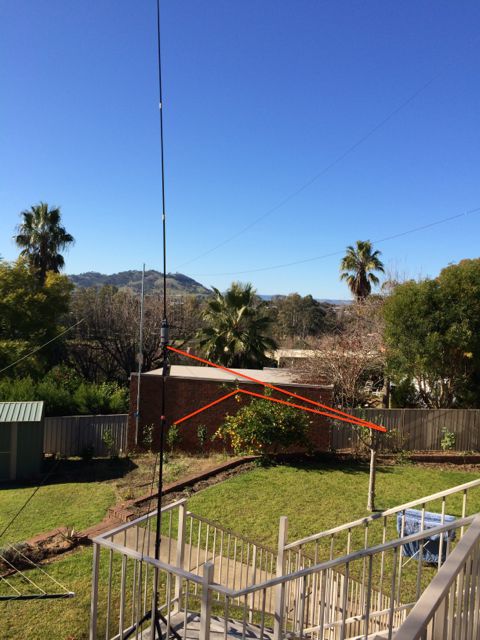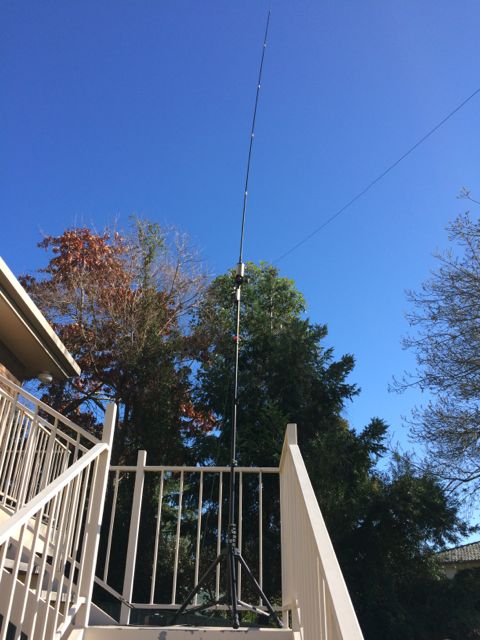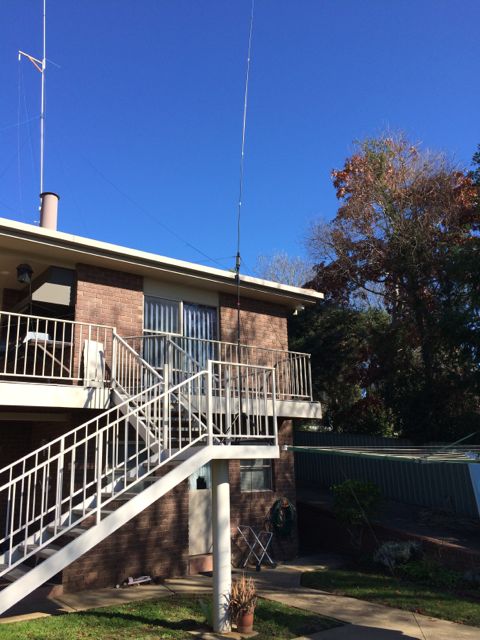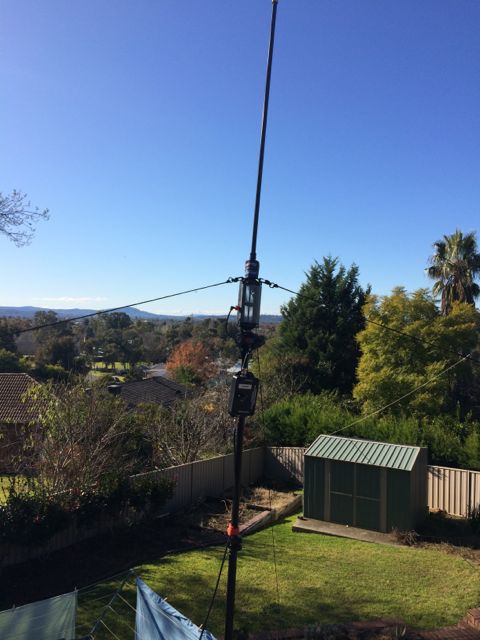80 meters is very difficult band to take on the road as a portable dipole (inverted V) due the long wires (40mt), the horizontal space required to erect a dipole and the height at which the dipole needs to be supported.
However, my vehicle HF antenna (Bushcomm Highlander 8 multi tap) covers the 80m band but only as a glorified dummy load. However, I have made contacts with this antenna on 80m and can follow the local nets while I'm away, so I figure anything better/longer/higher than the vehicle antenna should do better and hence I decided to try 80m with a vertical.
I already have a Buddipole and Buddistick but neither of give instructions for an 80m but they do mention that lower bands are impractical. Other antenna designs which I've found on the the net are providing various ideas on 80m verticals.
80m Vertical Mark I:
Using a Low Band Coil, 4 x 22" Aluminium arms and the 5 section 32" shock cord whip with tuning on both ends fully extended, mounted on the Versa-Tee on a the Buddipole tripod and portable mast. The counterpoise for the this version was 21mt long kept at least 2' off the ground.
This antenna tuned up quite well with the Low Band Coil using about half of it's available inductance. It was receiving about 1 S-point below my OCF Windom. However, the whole design was a bit too long at 7.1mt for the antenna which was 3mt off the ground, so the tip of this antenna was over 10mt off the ground and the antenna was swinging precariously but I was lucky as we didn't have a breath of wind.
However, while I was in the shack the whole thing fell over and when I got it back up it just didn't feel right. The mechanical stress on the low band coil with a 7mt antenna on top was beyond what I could expect of this equipment. Mark I was abandoned, before I could take any photos.
80m Vertical Mark II:
Leaving out the Aluminium arms and reducing the shock cord whip by not extending the bottom tuning section I brought the antenna height down to 4.8mt. The addition of the Buddipole guying kit at the bottom of the antenna (just above the coil) gave me the confidence that the whole construction wasn't going to fall over like the first model.
I little bit more inductance was required with the Low Band Coil now tapped a bit past the half way point at the 33rd winding. Once the coil is tuned to provide the lowest available SWR on the desired frequency the counterpoise can be adjusted to bring the antenna into resonance at the desired frequency. I got an SWR of 1.4 in the centre with a bandwidth of 120kHz below SWR 2 which did come as a surprise to me - I thought this setup would be a lot narrower, maybe around 50kHz.




The balun shown in the picture is a Buddipole TRSB set to 1:1 - which was also a surprise, I expected to require at least 2:1.
Using 80mt vertical
The Mark II antenna was used on a caravan trip to Queensland in June 2015. The setup was exactly as shown in the pictures above with the vertical on top of the buddipole mast which was always extended to it's full height and supported with the buddipole guy wires.
The antenna was connected to my Yaesu FT-857D by 10mt of RG58 and the output power was set to 100W. There was no antenna tuner in the circuit, the counterpoise was used to tune the antenna to the desired frequency and the SWR was generally below 1.5
The counterpoise wire was always kept as high as possible, at least 1mt above the ground.
Contacts from my Caravan base in Queensland (Brisbane) were made to New Zealand and back home to Victoria. I was able to get onto our club net and communicate with all the stations I normally contact from my home QTH.
Is it worth the trouble?
All things considered, I consider this antenna a very good performer. It packs up very small, is easy to erect and has a small footprint. In conjunction with a 100W transceiver (such as the FT-857D) this is definitely a very workable combination.